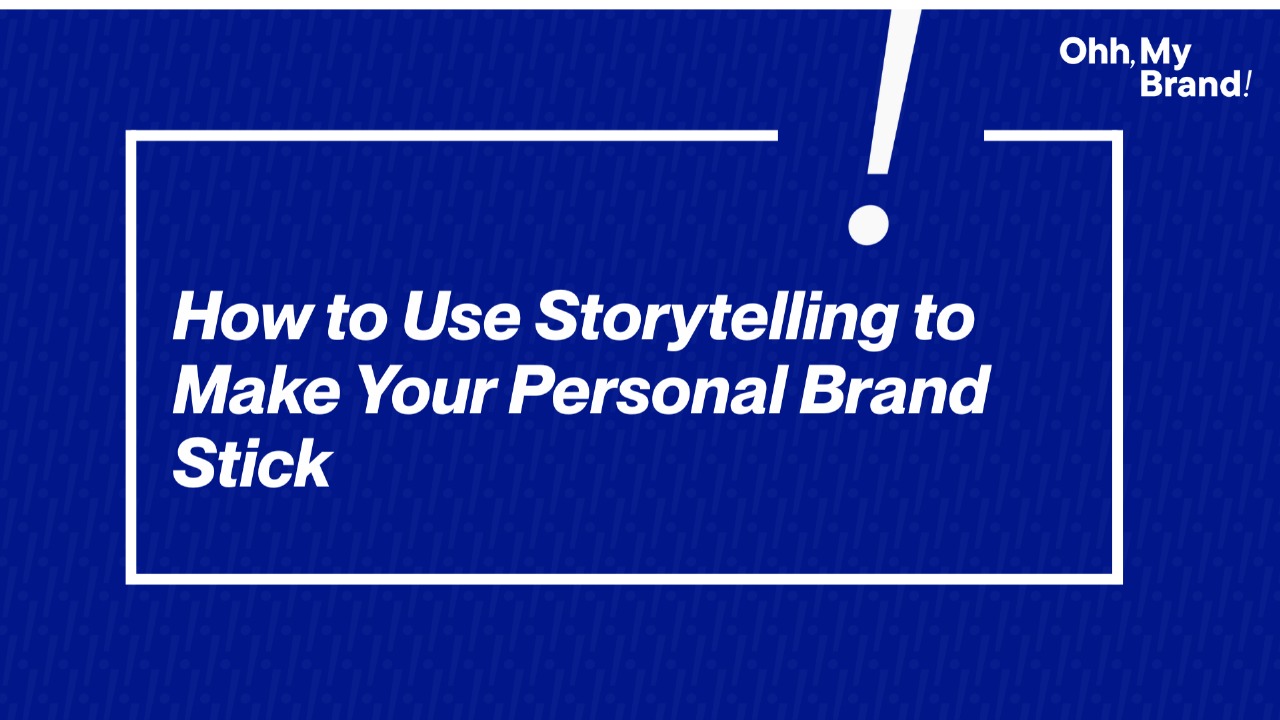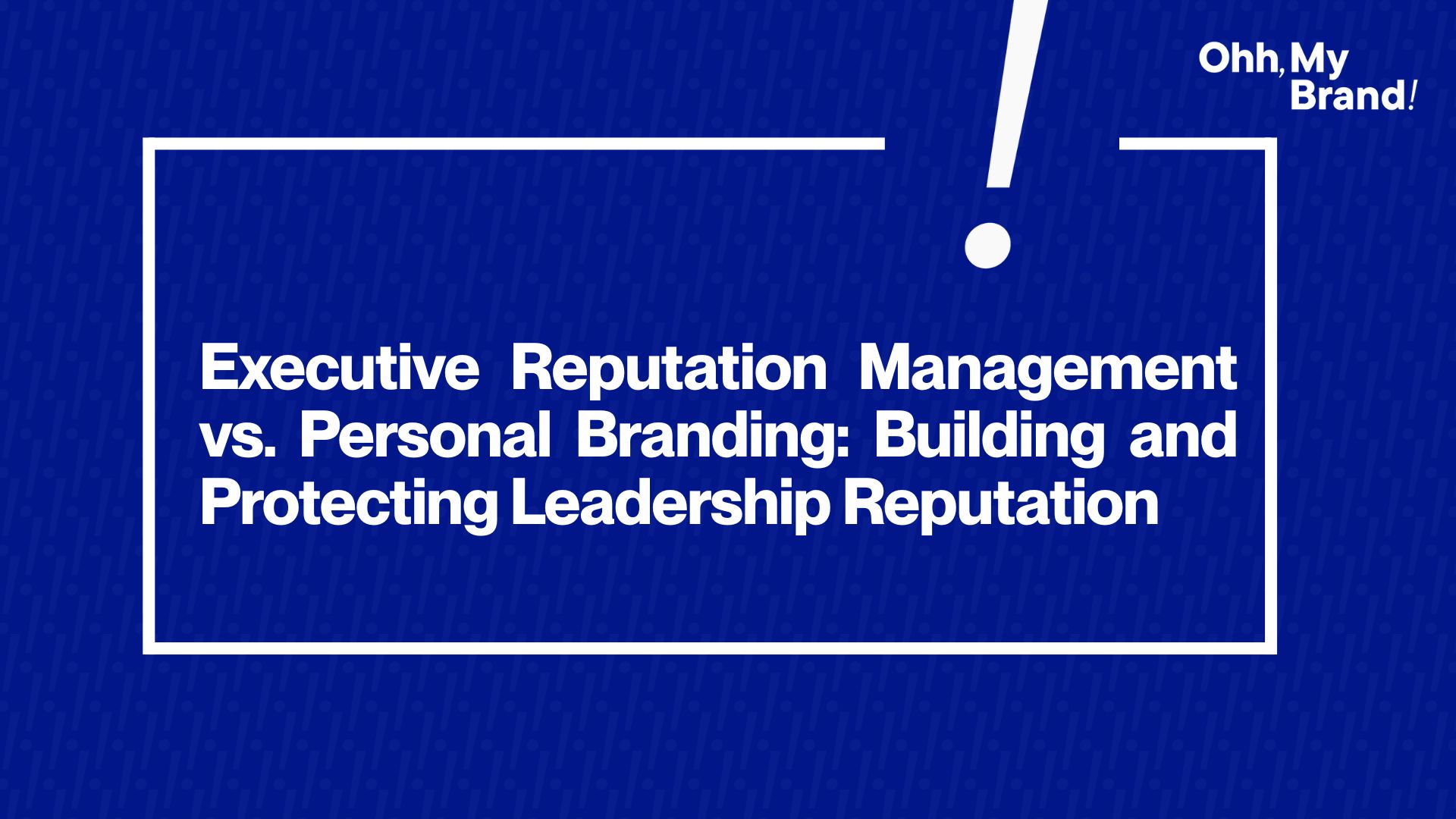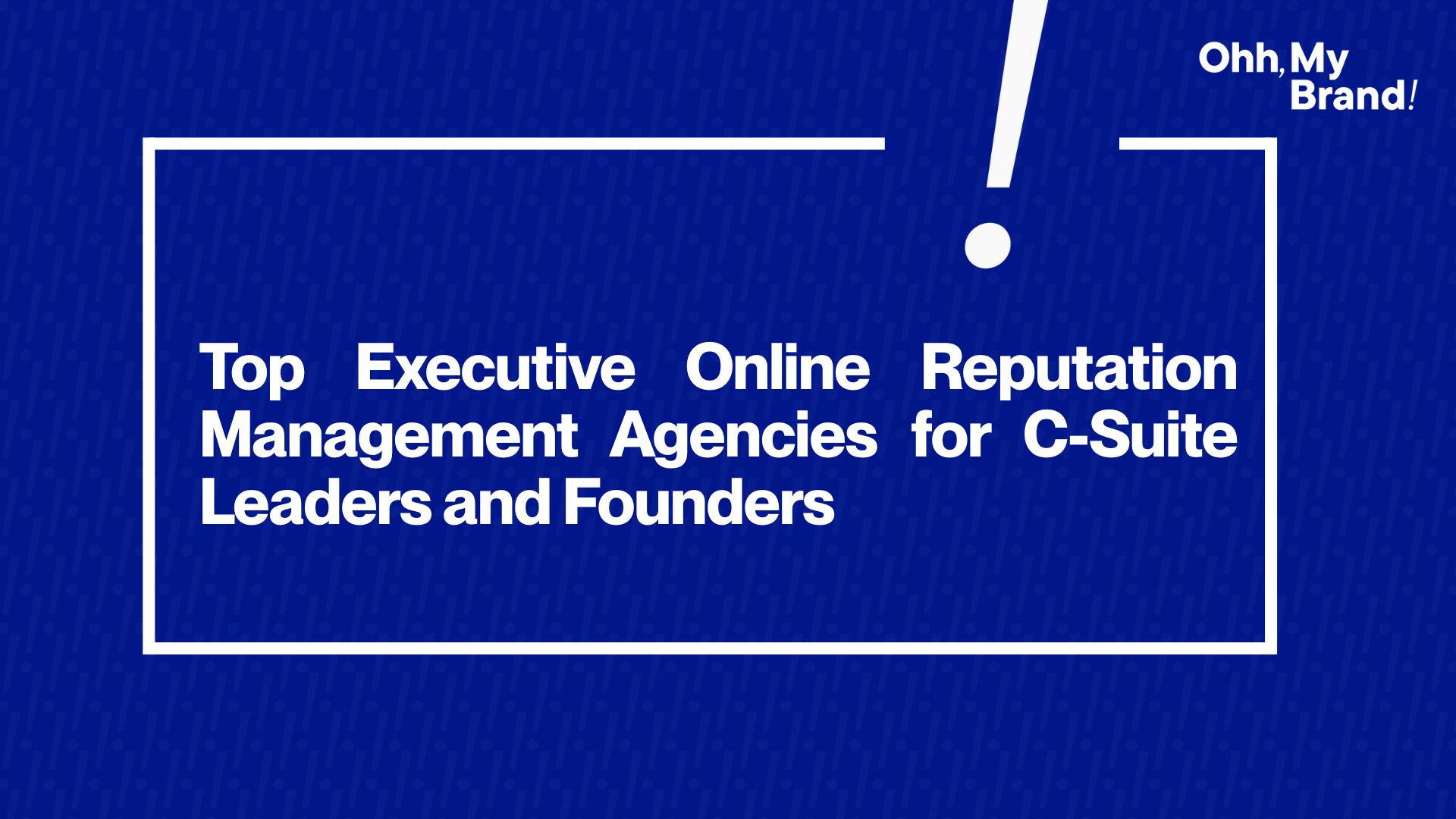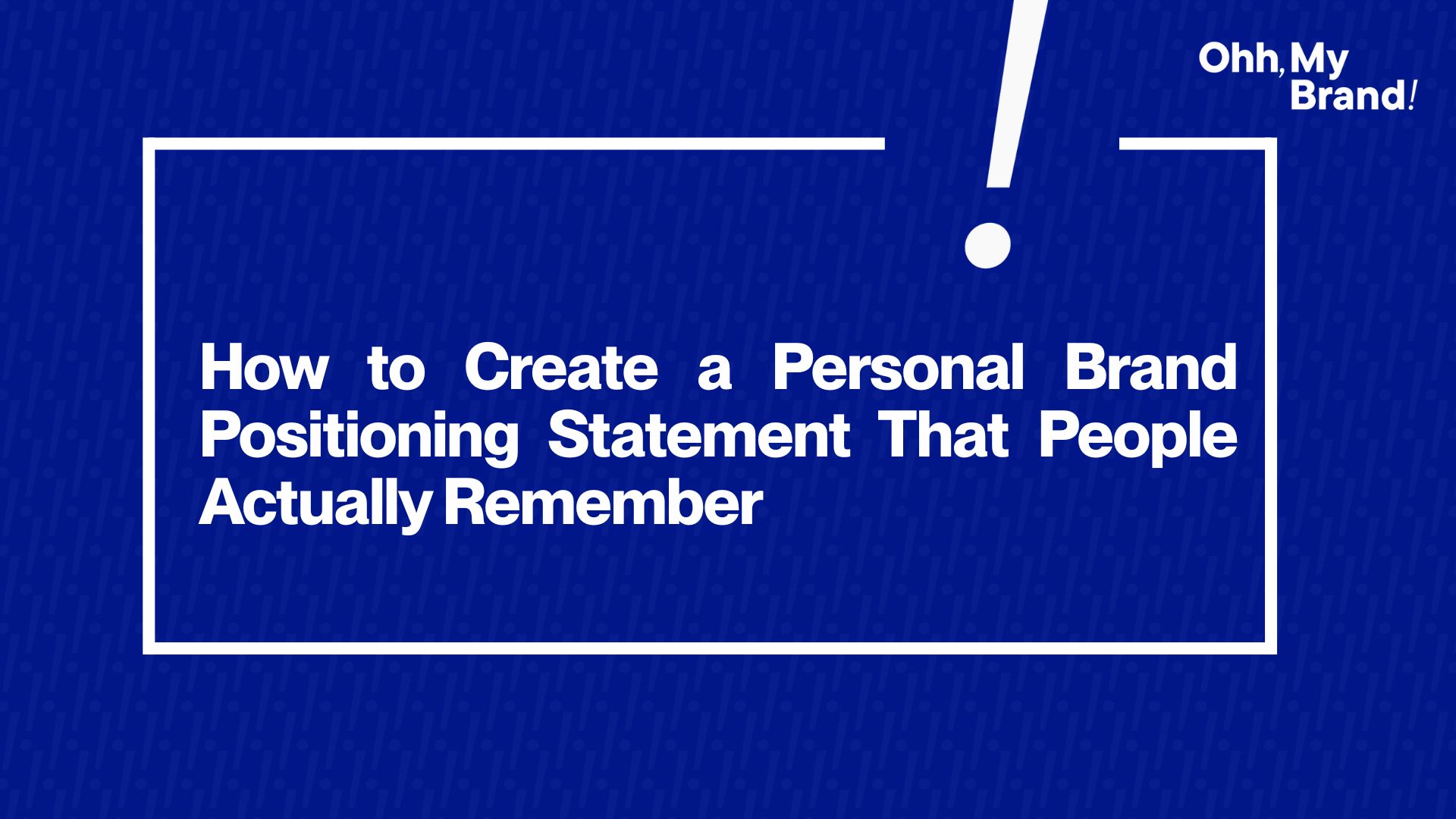

How to Use Storytelling to Make Your Personal Brand Stick
Once upon a time… those four words can magically captivate an audience. Now imagine applying that magic to your personal brand.
Whether you're a solopreneur launching a startup, a content creator growing an audience, or a job seeker eyeing your dream role, one thing’s for sure: people remember stories, not just résumés or product specs. Brand Storytelling is not a "nice-to-have," it's your secret weapon to be memorable, likeable, and trusted.
In this blog, we're getting bold and creative about why storytelling matters, what makes a great brand story, and how you can craft and share an unforgettable narrative that sticks in everyone’s mind.
Let's dive in and transform your personal branding from forgettable to unforgettable.
Why Storytelling Matters in Personal Branding
Humans are hardwired for stories. From childhood fairy tales to Netflix binges, we connect with narratives on a deep emotional level. In the context of personal branding, that is pure gold.
Facts alone might tell people what you do, but a story shows who you are and why it matters. Research backs this up: emotionally engaged consumers are 2.4 times more likely to stick with a brand. Our brains process stories up to 22 times more effectively than dry facts.
Translation: if you want your personal brand to be remembered and shared, lead with a narrative, not a list of achievements.
Think about it. Would you rather read a LinkedIn profile that says "Marketing professional with 5 years of experience in SaaS" or one that opens with "I got my start in marketing at age 10, selling homemade cookies to buy a Lego set, and discovered I loved the hustle"?
The second one paints a picture and makes you lean in. Storytelling gives your brand heart and personality, turning you from a faceless name into a living, breathing character people care about.
The Key Elements of an Unforgettable Personal Brand Story
Every gripping story, from epic movies to your favourite novel, has certain ingredients that hook us. Your personal brand story is no different. Let's break down the essential elements that will make your story compelling and authentic.
Origin Story: Your "Once Upon a Time"
Every hero’s journey and every brand starts somewhere. Your origin story is the beginning of your personal brand, the background that shaped who you are. It might be the childhood experience that sparked your passion, the problem you noticed in the world, or the moment you decided to pivot careers.
Sharing these origin moments gives your audience context and meaning. In personal branding, your origin story is gold: it explains why you do what you do and builds authenticity from the get-go.
Core Values and Mission: What You Stand For
Great stories carry meaning, and so should yours. The values, beliefs, and mission driving your personal brand are like the themes of your story; they tell people what you stand for.
Instead of rattling off buzzwords like integrity, innovation, or excellence, weave your values into narrative form. Show, don't just tell. If one of your core values is empowerment, share a story of how you helped someone find their confidence. If you value curiosity, recount the time you left a stable job to travel and learn new skills. These anecdotes demonstrate your principles in action.
When your brand story highlights your values, it does double duty. It attracts like-minded people and differentiates you.
Think of Brené Brown. Her personal brand revolves around courage and vulnerability, and she constantly shares stories, including her own struggles, that reinforce those values. The result? Her audience feels her honesty and mission, not just hears about them.
Conflict: The Challenge You Overcame
If there is no mountain to climb or dragon to slay, the story falls flat, in fiction and in real life. Conflict is the engine of a compelling personal brand identity story. We are talking about the challenges, obstacles, and yes, the failures you have faced.
It might feel safer to skip this part and only share the wins, but a story with no conflict is like a movie where nothing happens. In fact, without conflict, there is no emotion and no reason to care.
Don’t be afraid to peel back the curtain on some struggles: the startup that flopped, the confidence crisis, the time you got laid off, or the naysayers who told you “it will never work.” These moments of tension create drama and, more importantly, relatability. Your audience will see you as human, and many will see themselves in your challenges.
Remember, vulnerability builds trust. Without a conflict or problem to solve, your personal brand story has no purpose or resolution.
Transformation: Your "Hero" Moment and What's Next
Every great story has a transformation, the character arc or the moment the hero evolves. In your personal brand saga, this is the turning point and what you learned from it. How have you changed? What did overcoming those conflicts teach you, and how does it shape the value you offer now? Highlighting your transformation shows growth, resilience, and sets up the next chapter, how you are using your experience to help others or fuel your mission.
For instance, take Ali Abdaal, a doctor turned YouTuber. His personal brand chronicles how he went from burning out in medicine to building a thriving online business around teaching productivity. By openly transitioning from one career to another, he shows a transformation that resonates with anyone craving a change. Importantly, Ali positions himself not as a distant guru but as a fellow learner sharing what he has discovered. He teaches from his own lived experience, making his content feel authentic and actionable. That transformation, from newbie doctor to influential creator, is his brand.
Crafting and Sharing Your Story Across Platforms
By now, you might be thinking, "Great, I’ve got my story, but how and where do I tell it?" The answer: everywhere your audience is. Your story should be the common thread across your LinkedIn, your website, interviews, speeches, and beyond. Let’s get tactical about how to infuse storytelling into key platforms.
LinkedIn: Turn Your Profile into a Narrative
LinkedIn is the platform for professional branding, but that does not mean your profile should read like a stiff CV. This is a chance to tell your professional story in a personable way. Start with your headline and "About" section, hook readers with a one-liner or opener that hints at your journey or mission. For example, open with an anecdote or a bold statement like "I fell in love with coding at age 12. Now I build apps that solve everyday problems." Draw them in, then in your summary, share the arc of how you got here, what drives you, and what you are excited about.
Your Website or Blog: Make the About Page a Story Page
Your personal website is your home base and the best place to tell your story in full. Don’t waste the "About Me" page on sterile third-person bios. Instead, write it as a story. Set the scene: what experiences led you to start your business or project? What problem did you see, and how did your background equip you to solve it? Use a conversational tone (first person "I" is perfectly fine) and take the reader on a mini journey from your origins to your current mission. By the end, they should understand who you are, why you do what you do, and how your unique journey makes you the right person for whatever you are offering.
Interviews and Networking: Share "Story-Answers"
When you are in a job interview or even a casual networking chat, you will inevitably get prompts like "Tell me about yourself" or "How did you get into this field?", golden opportunities to use storytelling. Don’t just list roles and skills. Instead, reply with a concise narrative. For instance: "Sure! I actually started my career in finance, crunching numbers all day. One quarter, I was tasked with presenting data to execs, and I realized I had a knack for translating boring stats into compelling stories. That is when I pivoted into marketing. I wanted to tell better brand stories using those analytical insights." See how that answer weaves in experience and personality? It is far more engaging than "I have 5 years in finance and 3 in marketing. Using mini-stories in interviews showcases your personal brand in action.
Speaking Gigs and Presentations: Lead with a Story
Ever notice how the best TED talks or conference keynotes often start with a story? That is because storytelling hooks any audience. It is a speaking superpower.
If you have a speaking engagement, from a Zoom webinar to an on-stage talk, plan to open with a personal anecdote or a narrative that sets up your key message.
For example, if you are giving a talk on entrepreneurship, you might start with, "Two years ago, I was eating ramen in my garage turned office, wondering if anyone would ever buy my product" and then segue into how you persevered or the lesson learned. This not only entertains, it makes your advice credible because it is rooted in experience. People will remember the story and the point it illustrated.
As speaker and author Tony Robbins often demonstrates, weaving in personal stories, like his childhood struggles, can make your message deeply inspiring and human. Even a technical presentation can benefit from a quick story to highlight why the topic matters.
Putting It All Together: Steps to Craft Your Story
Feeling inspired? Awesome. Now it is your turn. Crafting your personal brand story might feel daunting, but it is totally doable with a step-by-step approach. Here are some actionable steps to get you started on making your brand story stick:
- Brainstorm Your Origin: Grab a notebook and jot down the key moments that led you to where you are. Think back, what experiences sparked your passion or changed your direction? Identify a few defining memories, a childhood interest, a challenge in school, an early job that lit a fire. These are the seeds of your origin story.
- Identify Your “Why” and Values: Ask yourself why you do what you do. What motivates you every day? Also, list your core values or beliefs, community, creativity, freedom, and so on. Now connect the dots: which experiences from step one illustrate those values or that mission? For instance, if curiosity is a core value, maybe that summer you taught yourself coding in high school is a story worth telling. Align your story with what you stand for; it will make your brand feel meaningful and cohesive.
- Outline the Conflict and Lessons: Consider the biggest challenges or obstacles you have overcome on your journey. Jot down at least one "villain" or hurdle in your story. Then note what you learned from dealing with it. This could be a failure that later led to success, a risk you took, or a personal hardship that shaped your character. Don’t shy away here; remember, the struggle is what makes the story compelling. How did you overcome it, and what insight or skill came from it?
- Pinpoint the Transformation: Define the turning point or outcome. How have you changed from the person in your origin story? What is the transformation, in your career, mindset, skills, or perspective, that came from overcoming your conflicts? Summarize how you went from point A to point B. This will often align with the services or value you now offer. For example, "I went from shy introvert to keynote speaker, and now I help others conquer public speaking fears." That is a transformation that also doubles as a brand promise.
- Draft Your Story Narrative: Now assemble those pieces into a narrative flow. It might help to use a simple framework: Beginning (origin and background), Middle (challenges and turning points), and End (where you are now and why it matters). Write it out in a few paragraphs. Don’t worry about making it perfect or grandiose, be authentic and conversational. You are writing how you would tell it. You can always polish the wording later. The key is getting the story down in a logical flow.
- Share and Refine Across Platforms: Start integrating this story into your branding materials. Update your LinkedIn "About" section with a shortened version of it. Revamp your bio on your website to reflect the narrative (use first person "I" for more intimacy). Prepare a 30-second story pitch for introductions or interviews, essentially your story distilled into a quick personal anecdote. As you share your story on different platforms, pay attention to what resonates. You might find people respond strongly to one part of your journey, great, lean into that. Your story can evolve with you, so view this as an ongoing process. Consistency is key. The tone and core message should remain the same even if you tailor details for each context.
- Live Your Story: Finally, continue to live and breathe your brand story. Use it as a compass for what opportunities you pursue or content you create. If your story is about overcoming odds to pursue creativity, then keep sharing new chapters of that. For example, a post about a recent project where you took a creative risk. When your story is authentic, there is no off switch; you will naturally embody it in how you act and communicate.
By following these steps, you will have a clear, compelling personal brand story that you can confidently share. Remember to be patient and fearless. It takes guts to open up about your journey, but as all the personal branding superstars show, it is worth it. Your story sets you apart from everyone else in your field; no one can copy it. So embrace it.
In Closing
Your personal brand is not a logo, a resume, or a curated Instagram feed. It is the story you tell and the feeling you leave people with. When you leverage storytelling, you stop being just another name in the crowd and become the protagonist of a memorable narrative. People will forget a list of accomplishments, but they will not forget a story that moved them, inspired them, or made them see a bit of themselves in you.
So, start sharing your tale with boldness, creativity, and heart. Speak to your audience as you would a good friend. Use humour. Use honesty. Use whatever makes your story yours. And don't be afraid to let your personality shine through; that is what makes a brand feel human instead of corporate.
As one storyteller wisely noted, "Maybe we should stop telling perfect stories and start telling the true ones."
It is time to tell your true story. Do this, and not only will your personal brand stick, it will thrive, inspire, and open doors in ways facts and figures alone never could. Your story is your brand. Start writing the next chapter now. Let Ohh My Brand help you craft a personal brand narrative that connects, inspires, and sticks. Start your story with us today.









.svg)
.svg)
.svg)
.svg)
